Corn casserole is a classic comfort food that’s both delicious and easy to prepare, making it a perfect choice for busy moms. This dish, with its creamy texture and sweet, savory flavors, is a versatile side that pairs wonderfully with a variety of main courses. Whether you’re preparing a weeknight dinner or a dish to share at a family gathering, corn casserole’s crowd-pleasing appeal is undeniable. Its simplicity is key; using everyday ingredients, this casserole comes together quickly, allowing more time to focus on your family. This article will guide you through making this delightful dish, ensuring it comes out perfectly every time.
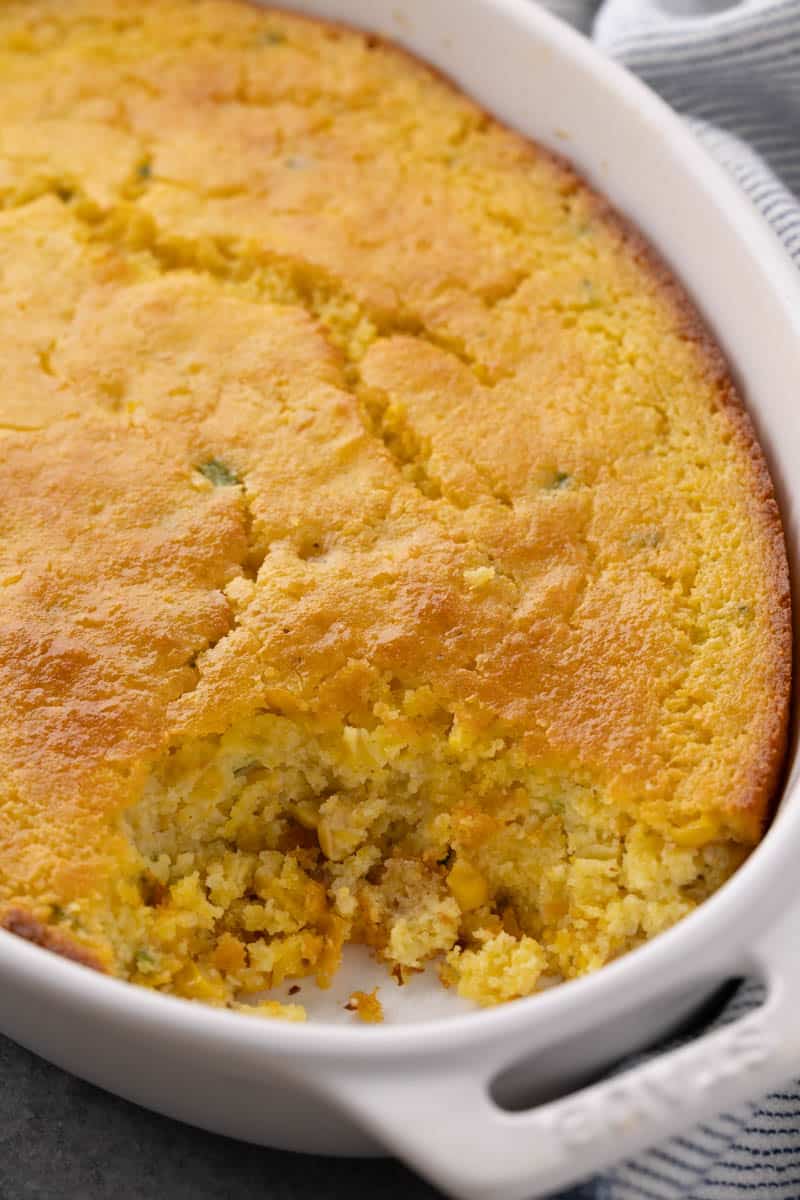
Ingredient Breakdown & Substitutions
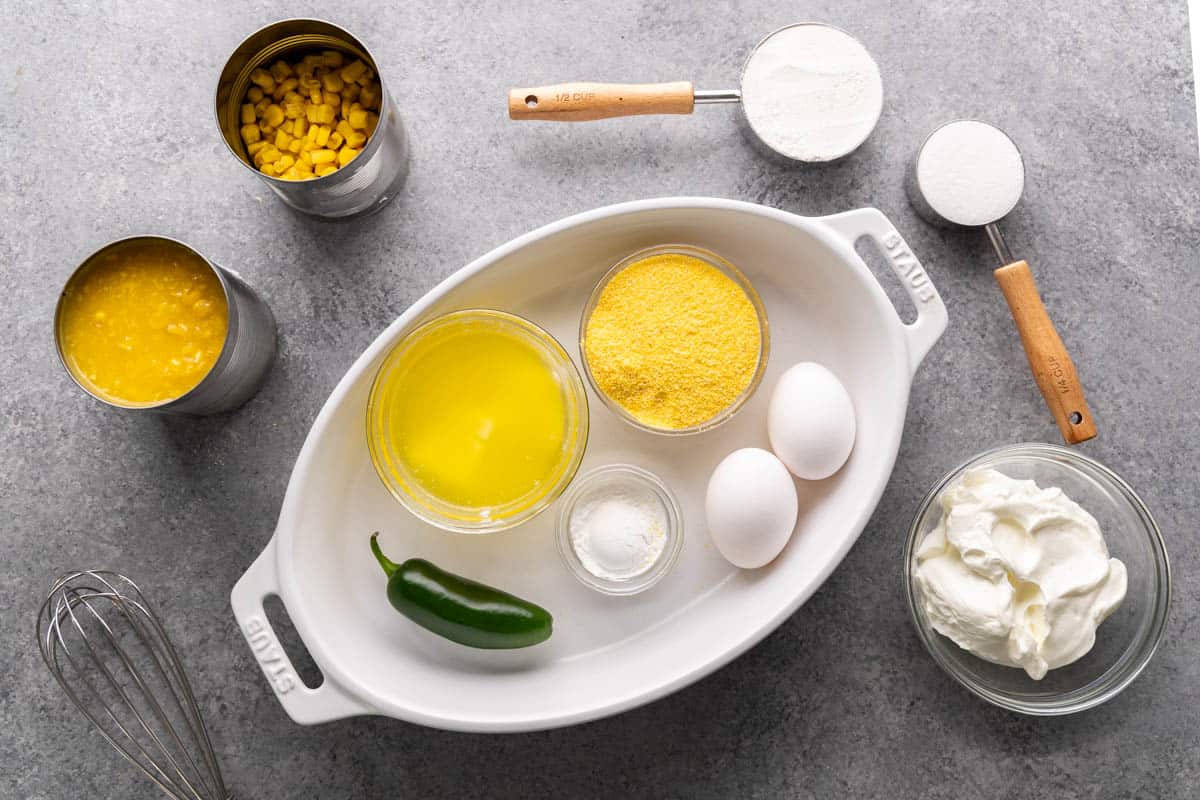
- Creamed Corn: Adds creaminess; substitute with additional corn kernels and cream.
- Corn Kernels: Provide texture; frozen kernels can be used instead of canned.
- Dry Ingredients (flour, corn meal, sugar, baking powder): Gives structure; an 8.5. ounce box of store-bought corn muffin mix can be used instead.
- Jalapeño: Adds a kick; bell pepper works for a milder flavor.
- Eggs: Bind ingredients; commercial egg substitutes can be used for allergies.
- Unsalted Butter: Adds richness; you may use a plant-based butter as an alternative.
- Sour Cream: Enhances creaminess; Greek yogurt is a healthy alternate.
Frequently Asked Questions
Yes, you can prepare the casserole a day ahead and refrigerate it before baking.
Yes, you can adapt this recipe for a slow cooker. Cook on low for 2-3 hours, or until set. This method is great for keeping the casserole warm at potlucks or gatherings.
Yes, as it contains no meat products, it’s suitable for vegetarians.
Absolutely! A sprinkle of cheddar or a similar cheese can add extra flavor.
Greek yogurt is a great substitute for sour cream.
The spice level depends on the jalapeño. Removing seeds reduces heat.
Baking Pan Options
The choice of baking pan can have a significant impact on how your corn casserole turns out, both in terms of texture and cooking time. Here are some common options:
- Glass Baking Dish: Glass dishes are great for casseroles. They heat up slowly but retain heat well, leading to even cooking. However, they might require a slightly longer baking time compared to metal pans.
- Metal Baking Pan: Metal pans, including aluminum, heat up quickly, which can lead to a crisper exterior. Be aware that the casserole might cook a bit faster in a metal pan, so you may need to check it earlier to prevent overbaking.
- Ceramic Dish: Similar to glass, ceramic dishes retain heat well and provide even cooking. They also add an aesthetic appeal if you’re serving directly from the dish.
- Cast Iron Skillet: A preheated cast iron skillet can give your casserole a wonderful crust, but it also retains a lot of heat, so you’ll need to watch your casserole closely as it might cook faster and brown more on the bottom.
- Disposable Aluminum Pans: These are a convenient option, especially for bringing the casserole to potlucks or gatherings where you don’t want to worry about retrieving your dish. They cook similarly to regular metal pans.
- Different Sizes and Shapes: The depth and size of your baking dish will affect cooking time. A deeper or smaller dish will take longer to cook through, while a shallower or larger dish will cook faster. It’s important to adjust the baking time accordingly.
Chef’s Tip
Always start checking your casserole for doneness about 10-15 minutes before the recipe’s suggested baking time, especially if you’re using a different type of pan than what’s specified in the recipe. A toothpick inserted in the center should come out clean when the casserole is done.
Visual Guide to Making Corn Casserole
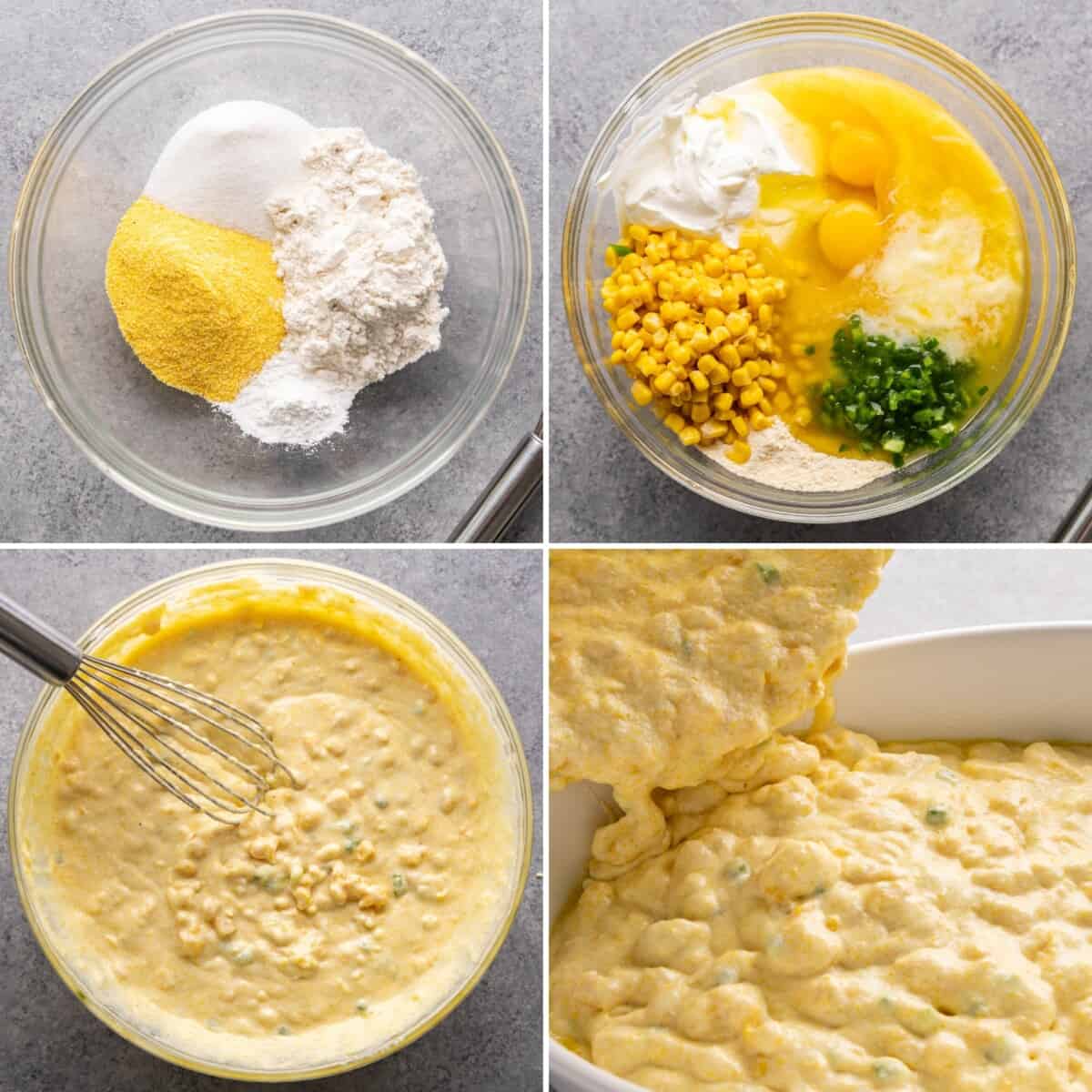
Seasonal Variations
- Spring: Add fresh asparagus or peas for a fresh, seasonal twist.
- Summer: Mix in sweet, fresh corn off the cob for a summery flavor.
- Fall/Winter: Incorporate root vegetables or swap jalapeno with roasted green chiles for a warmer flavor.
Serving Suggestions
Easy corn casserole pairs beautifully with grilled meats, barbecue, or roasted vegetables, making it a versatile side for many occasions. It’s a great addition to potlucks, holiday dinners, or casual family meals. Serve it as part of a larger spread for a hearty and satisfying meal.
Troubleshooting
- Casserole too runny? Cook longer or ensure corn kernels are well-drained.
- Not setting properly? Check oven temperature accuracy.
- Lacks flavor? Adjust seasoning or add cheese for extra richness.
Tips From the Chef
- Drain canned corn thoroughly to prevent a soggy casserole.
- Finely chop the jalapeño for even distribution of flavor.
- Let the casserole rest for a few minutes after baking for easier serving.
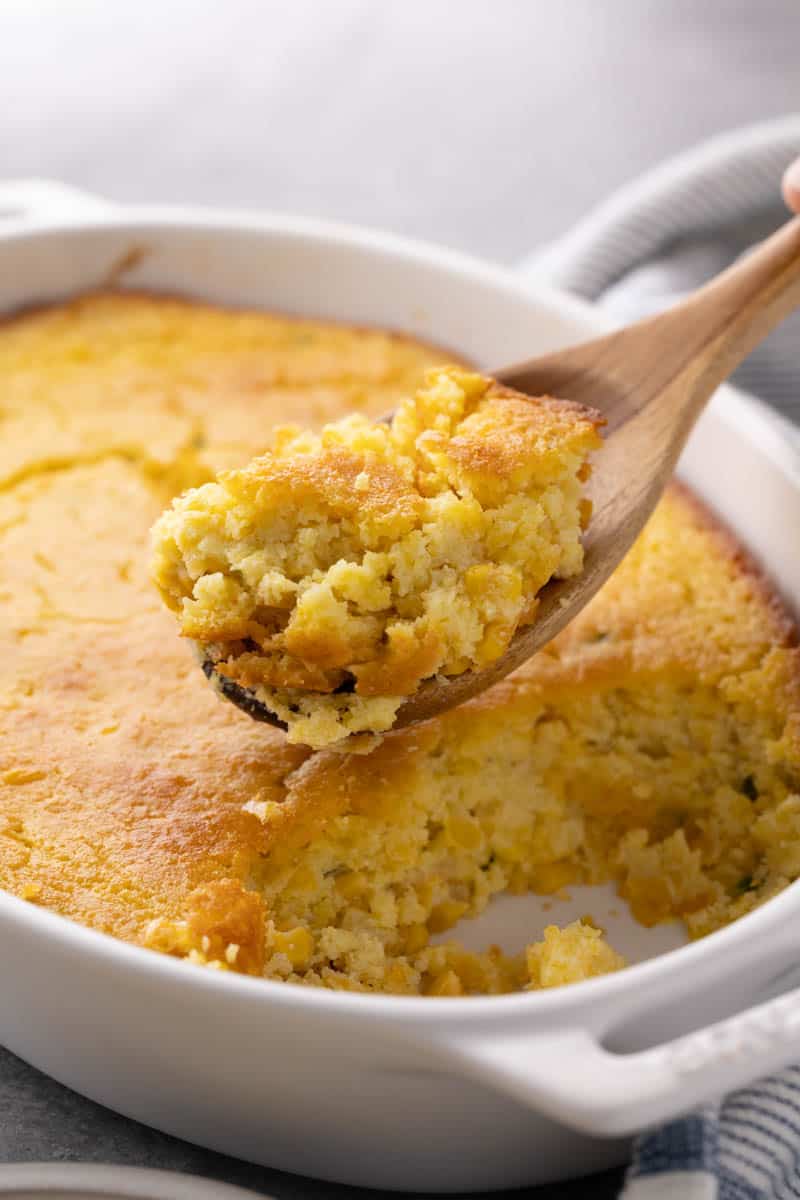
Storage & Reheating Instructions
Store leftover casserole in the refrigerator for up to 3 days. Reheat in the microwave or oven. For freezing, wrap the casserole tightly and freeze for up to 3 months. Thaw overnight in the refrigerator and reheat in the oven until warmed through.
More Amazing Corn-Based Recipes
Watch the video below where Caytlin will walk you through every step of this recipe. Sometimes it helps to have a visual, and we’ve always got you covered with our cooking show. You can find the complete collection of recipes on YouTube, Facebook Watch, or our Facebook Page, or right here on our website with their corresponding recipes.

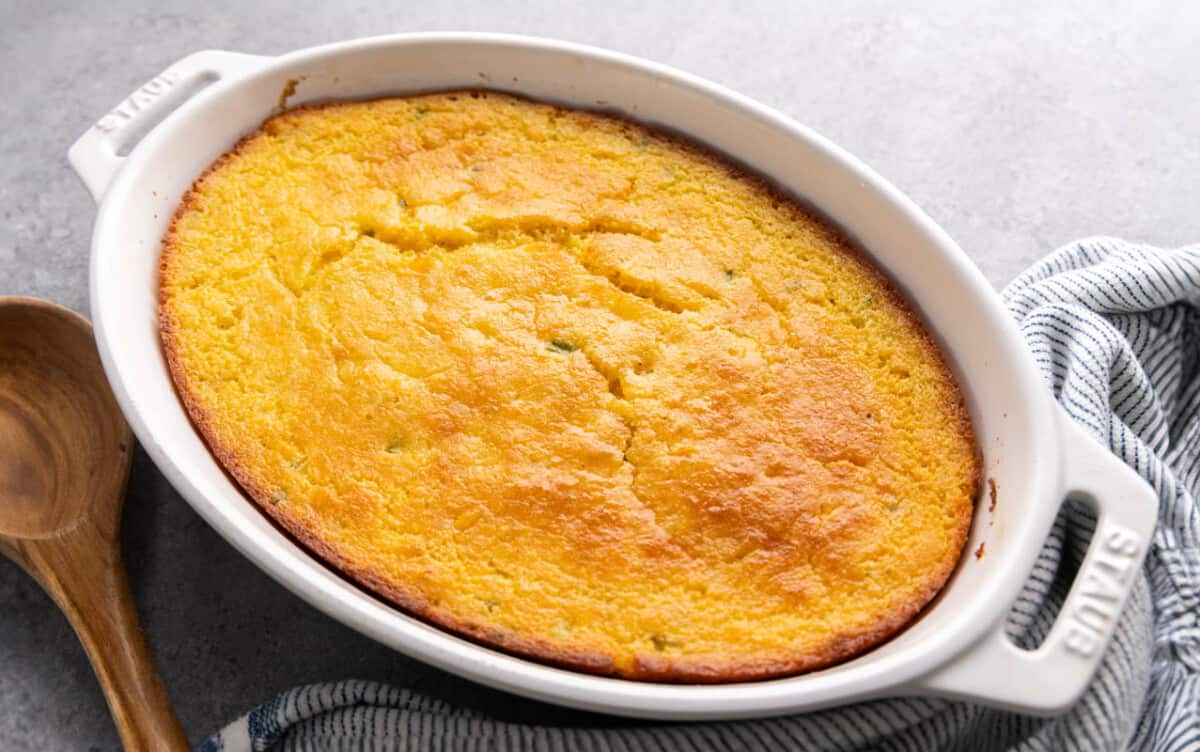
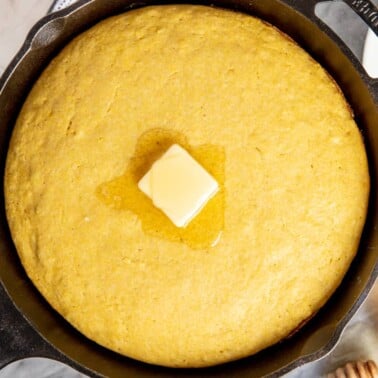
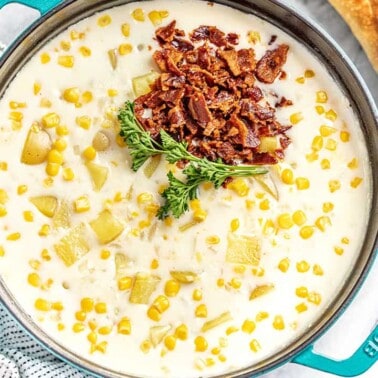
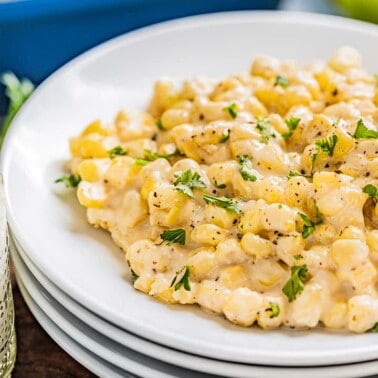
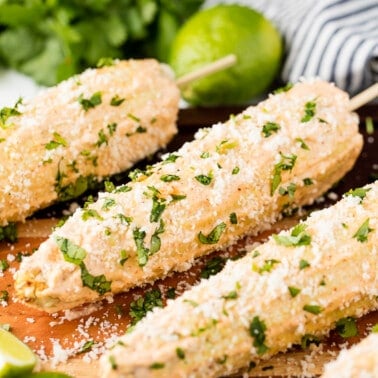
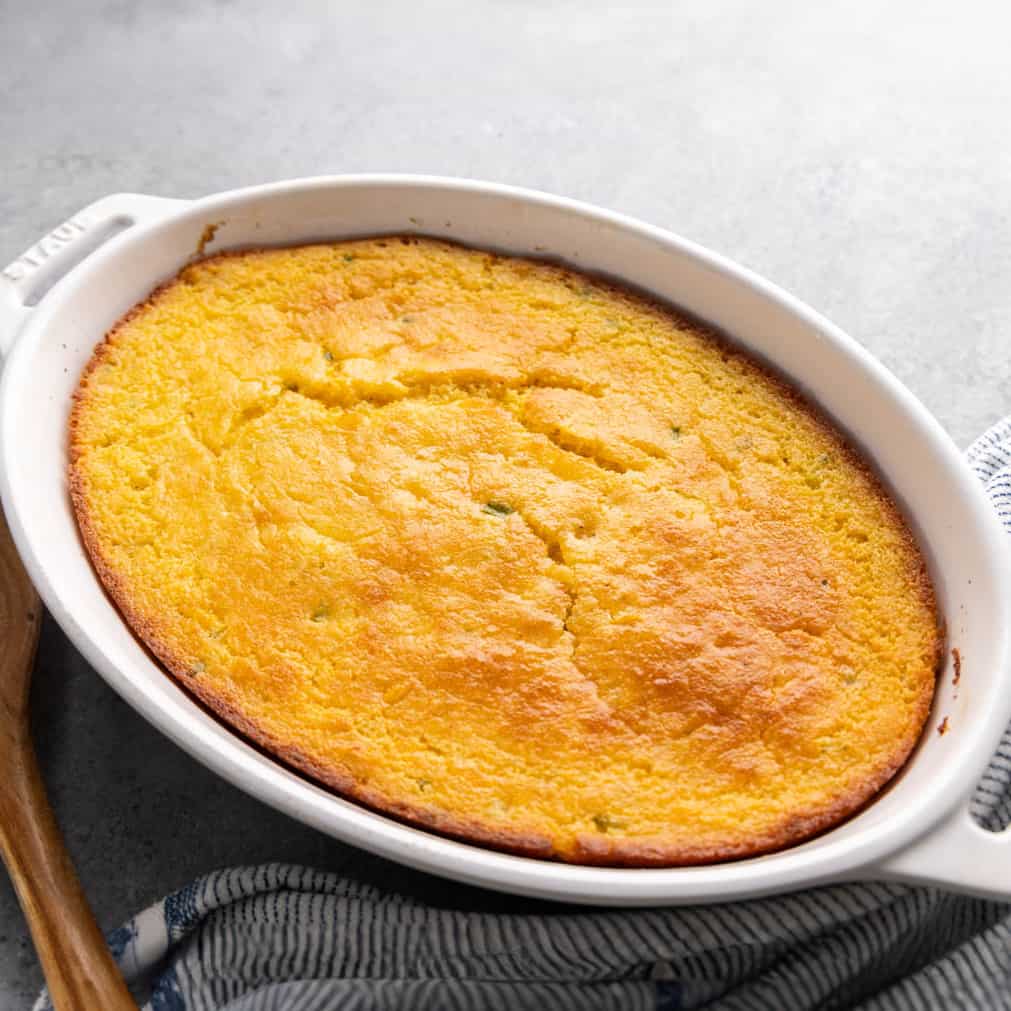
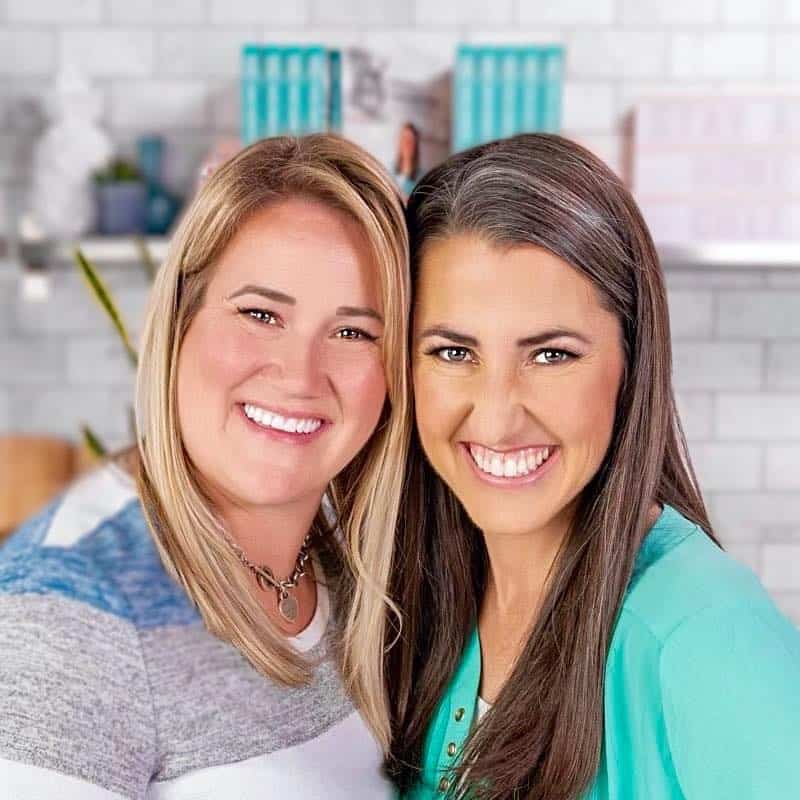
What can i replace jalapeno with?
Maybe pimento olives?/
Suggestions please
You could replace them with green chiles, pimentos, bacon, or omit them all together.